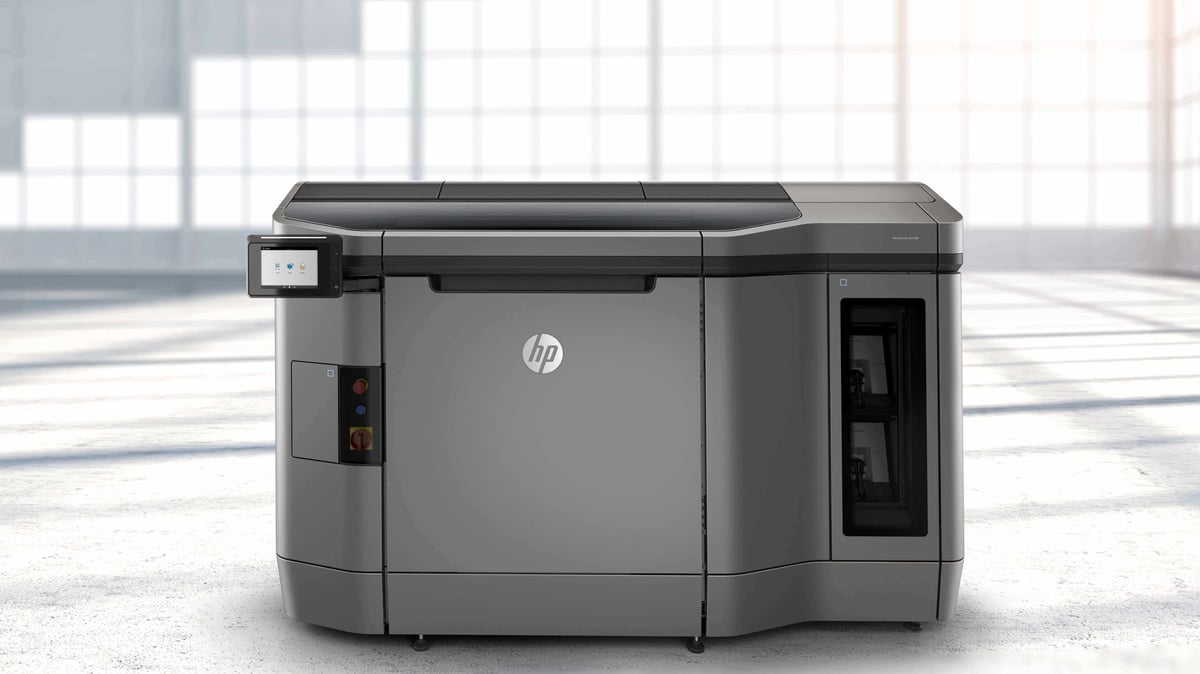What effect will HP’s Multi Jet Fusion technology have on the 3D printing industry moving forward? Rachel Park gazes into her crystal ball.
Related: HP Launches Jet Fusion 3D Printers at Rapid 2016
New York City, October 2014 — a place and time that stands out on the 3D printing calendar as it was the month that the industry was left in no doubt that one of the world’s biggest tech companies was taking 3D printing seriously — very seriously indeed. To great fanfare, which stimulated a 3D printing media frenzy, HP introduced its Multi Jet Fusion 3D printing technology.
HP’s intentions and claims of a unique technology platform since the first revelation back in 2014 have been well documented and while the company has kept its 3D printing marketing push very much alive throughout 2015, the visibility on the tech specs of the actual platform have been somewhat more limited. Of course HP’s business operations have also been through the wringer since 2014 too what with splitting the corporation in two and lots of re-organisation, but the determination behind its push into 3D printing did not cease.
Today saw the company keep to its word of entering the 3D printing market in 2016 with the first commercial release of an MJF platform – two of them actually. The process is the same for each but they come in different sizes — the HP Jet Fusion 3200 (for rapid prototyping) and 4200 (for short-run production). From the very beginning HP has only had its eye on the industrial landscape, going out of its way to avoid any links with the desktop market where its first foray into 3D printing first happened with the rebranded UPrint courtesy of a short-lived partnership with Stratasys.
Now though, the veil has been lifted and HP is placing the MJF 3D printing process front and centre with claims of ‘advancing the industry’ with ‘improved print speed and part quality’, ‘new color capabilities’ and ‘reduced energy and waste’ — all at a significantly lower cost of ownership.
There has been an HP white paper around on MJF for some time which explains how the process works, and for anyone that wants to know more it’s a must read. Having looked at this closely when it was published and again this week, I do not doubt that HP has come up with an original 3D printing solution based on its proprietary inkjet technology and expertise in this area. When assessing the claims of improved speeds/quality/color/reduced energy etc I confess to being slightly more cynical.

Questions about Multi Jet Fusion
My first question was “compared with what?” This is important because the implication in the marketing is ‘compared with every other process out there’; in actual fact the comparisons are only against plastic SLS and FDM processes. Therefore, MJF is not faster than CLIP (Carbon), it is not more accurate than SLA (3D Systems and Formlabs) and it does not have more color options than a Connex/J750 (Stratasys) or Arke (Mcor). And they’re just off the top of my head.
When you also consider the “breakthrough productivity” claim of ‘producing more parts per day with continuous printing and fast cooling’, it is only the actual 3D printer platform that is commercially available right now, and you need “an additional” one of them for continuous printing, according to the small print. For the fast cooling you need ancillary equipment — the HP Jet Fusion 3D Processing Station — which will not be available until 2017.
I get the sense that HP had to fulfill its promise of delivery of MJF in 2016, and kudos for them for doing it — at RAPID, the US’s largest additive manufacturing show. But the thing is, currently the machine/s that they have actually delivered, albeit at a lower than average capital cost, is still just a promise of what is to come.
I do think MJF will find a place in industry, but it is way too early to tell if the machine will come close to living up to the marketing spiel (but let’s be honest, all the 3D printer vendors are guilty of that) but as with all the other processes it will likely prove to be great, possibly the best solution, for some applications but certainly not all. MJF is not a silver bullet.
What is likely to happen now that HP is here for real is a change in the dynamics of the industry. Personally I don’t think it will be as dramatic as some people think — we’ve already seen some of the existing companies ramping up their offerings ahead of this launch but it likely won’t have any impact at all on the growing metal sub-sector of the 3D printing industry — unless HP have a secret competitor to XJET (also debuting at RAPID) or OCE up their sleeve.
License: The text of "How Will Multi Jet Fusion Impact the 3D Printing Landscape?" by All3DP is licensed under a Creative Commons Attribution 4.0 International License.